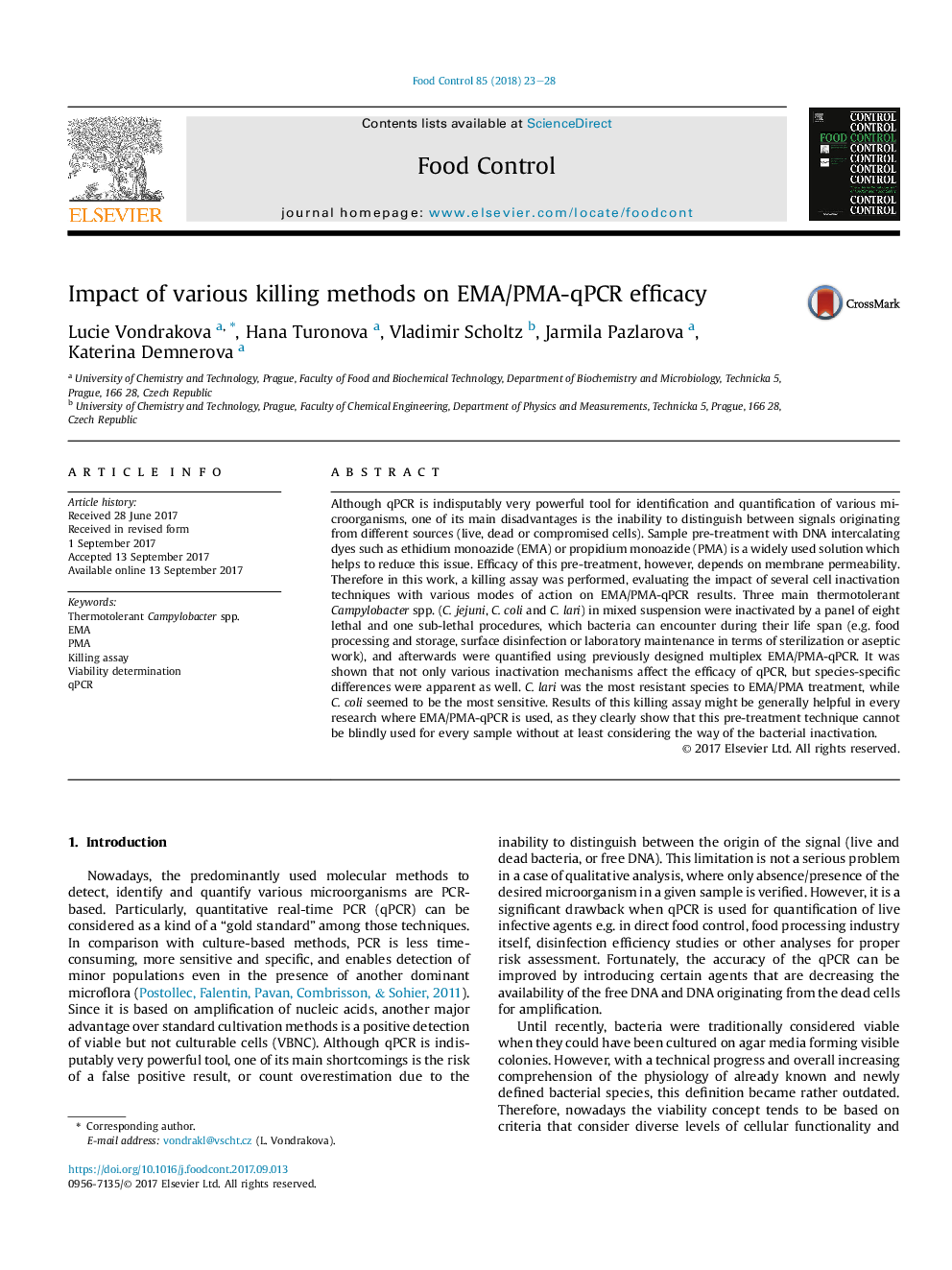| کد مقاله | کد نشریه | سال انتشار | مقاله انگلیسی | نسخه تمام متن |
|---|---|---|---|---|
| 5767207 | 1628379 | 2018 | 6 صفحه PDF | دانلود رایگان |

- EMA/PMA-qPCR efficacy vary depending on the mechanism of cell inactivation.
- Isopropanol, cold plasma and H2O2 suggested the most noticeable impact on membrane.
- Species-specific differences in EMA/PMA-qPCR efficacy were apparent as well.
Although qPCR is indisputably very powerful tool for identification and quantification of various microorganisms, one of its main disadvantages is the inability to distinguish between signals originating from different sources (live, dead or compromised cells). Sample pre-treatment with DNA intercalating dyes such as ethidium monoazide (EMA) or propidium monoazide (PMA) is a widely used solution which helps to reduce this issue. Efficacy of this pre-treatment, however, depends on membrane permeability. Therefore in this work, a killing assay was performed, evaluating the impact of several cell inactivation techniques with various modes of action on EMA/PMA-qPCR results. Three main thermotolerant Campylobacter spp. (C. jejuni, C. coli and C. lari) in mixed suspension were inactivated by a panel of eight lethal and one sub-lethal procedures, which bacteria can encounter during their life span (e.g. food processing and storage, surface disinfection or laboratory maintenance in terms of sterilization or aseptic work), and afterwards were quantified using previously designed multiplex EMA/PMA-qPCR. It was shown that not only various inactivation mechanisms affect the efficacy of qPCR, but species-specific differences were apparent as well. C. lari was the most resistant species to EMA/PMA treatment, while C. coli seemed to be the most sensitive. Results of this killing assay might be generally helpful in every research where EMA/PMA-qPCR is used, as they clearly show that this pre-treatment technique cannot be blindly used for every sample without at least considering the way of the bacterial inactivation.
Journal: Food Control - Volume 85, March 2018, Pages 23-28